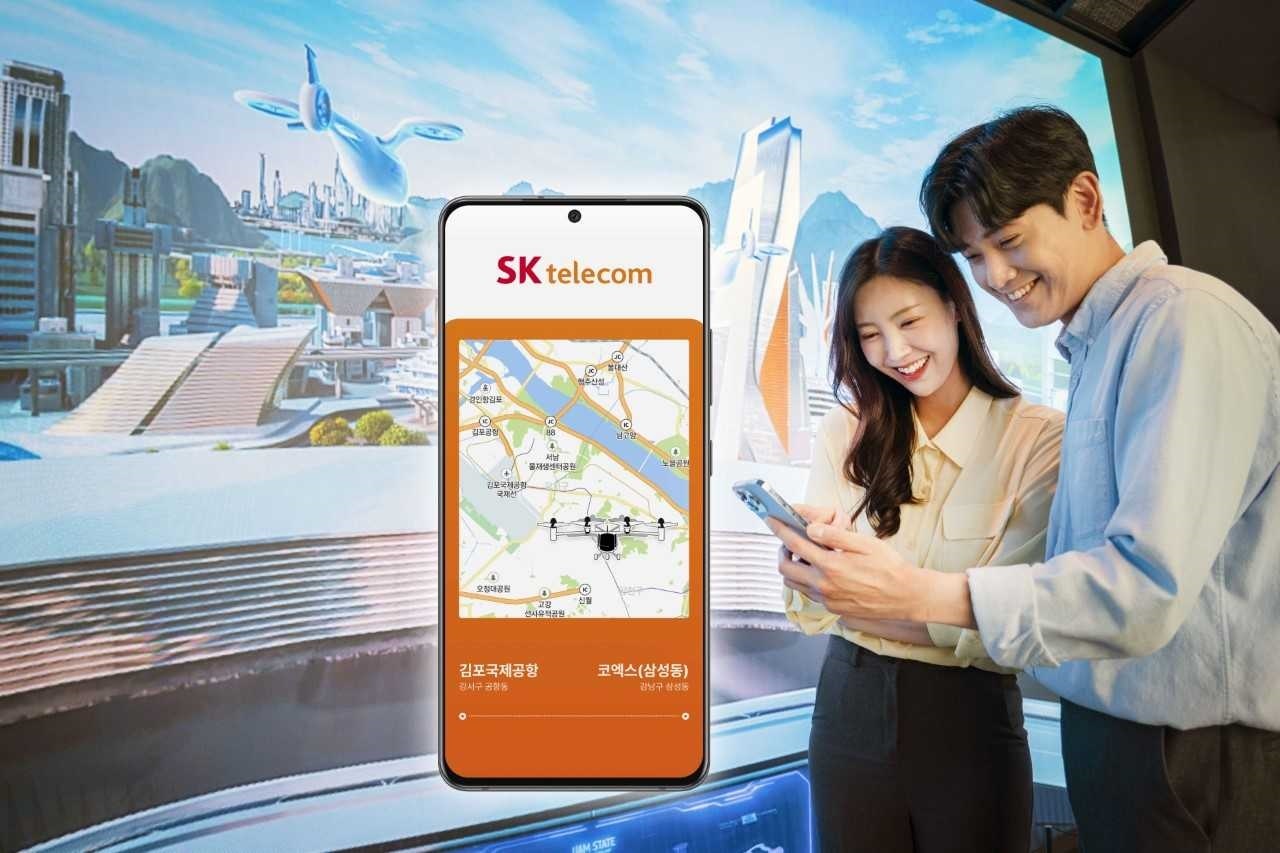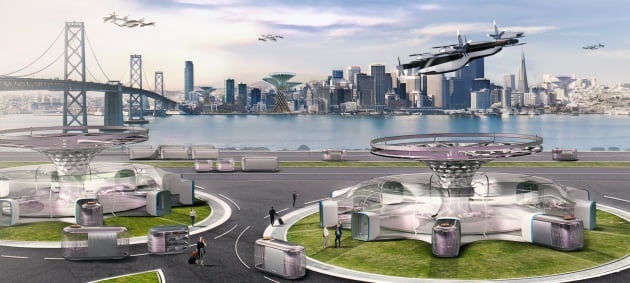Three-way race set for Korea's flying car commercialization
Consortiums each led by SKT, Hyundai, Kakao vie for market leadership of emerging business
By Kim Da-solPublished : May 31, 2022 - 15:48

The race for leadership of South Korea’s flying car market intensified Tuesday, with SK Telecom, Hyundai Motor Group and Kakao Mobility announcing their bid by forging consortiums with local companies.
SKT, Hyundai Motor Group and Kakao Mobility submitted their business proposals to join the K-UAM Grand Challenge, a government-led program to select an urban air mobility business operator. They are vying for the lucrative sector that is expected to surpass 1,800 trillion won ($1.4 trillion) in value by 2040. They aim to work with the government on UAM demonstration tests and to launch their own respective commercial services in 2025.
By forging a partnership with Hanwha Systems, Korea Airports Corp. and Korea Transport Institute, SKT will leverage its expertise in operating 5G and 4G information and communication technology services to establish a real-time communications environment for UAM. Stable and reliable connectivity between aircrafts and ground infrastructure is vital in airspace, according to officials.
Considering that the SKT-led consortium’s Hanwha Systems has already conducted a test on its UAM aircrafts, co-developed with US manufacturer Overair, some speculate that puts SKT an inch ahead of its competitors.
As SKT partners with experts in UAM and conducting research, Hyundai Motor Group has formed a partnership with players in diverse fields -- Korean Air, KT, Incheon International Airport Corp. and Hyundai E&C -- with an aim to build a UAM ecosystem.
Highlighting its expertise in vehicle manufacturing, Hyundai Motor is expected to make use of its global network through Supernal, its US-based UAM division. It intends to develop a product to meet global standards with leading market players like the UK’s Altitude Angel, Germany’s Skyroads and the US’ OneSky.

Touting its expertise in accumulated transportation data and mobility platform operation experience as its biggest asset, top Korean IT firm Kakao Group’s taxi-hailing service division Kakao Mobility has also stepped into the UAM business.
By forming a consortium comprising LG Uplus, GS Caltex, domestic drone solutions company Pablo Air, low-cost carrier Jeju Air and British UAM manufacturer Vertical Aerospace, it has recently announced that it will use GS Caltex’ network of gas stations to secure locations for the “vertiports” to launch vehicles.
Though not considered among the top three, Lotte Group has also formed its own consortium with Chicago-based gyroplane manufacturer Skyworks Aeronautics to make UAM vehicles. It has also gotten California-based Mobius.energy on board to develop battery modules. The consortium aims to run UAM vehicles connecting Incheon Airport to Jamsil -- the neighborhood in eastern Seoul where Lotte World Tower is located -- by 2024.
Who’s in the lead?
Though SKT’s UAM technology has not been tested publicly, some market experts view it as in the lead since it has partnered with a market pioneer, US aviation manufacturer Joby Aviation. SKT has also made it clear that it would bring Joby’s S4 aircraft to Korea, which can fit four passengers and travel up to 240 kilometers on a single charge. The S4 has undergone over 1,000 rounds of test flights and also performed NASA’s UAM demo test.
Other experts have viewed that Hyundai Motor Group’s latest announcement that it will inject $5 billion to collaborate with US firms in the fields of robotics, UAM, autonomous driving and artificial intelligence as laying significant groundwork for the automaker to make speedy decisions in terms of materializing UAM technology in the local market.
“There is a huge gap between the US and South Korea in terms of technological advancement when it comes to future mobility like UAM, which makes it inevitable for Korean firms to develop related technology in the US and bring it and apply to the local market. This puts firms (with close partnerships in the US) in an advantageous position to preoccupy the UAM market here,” said Lee Hang-koo, a senior researcher at the Korea Automotive Technology Institute.
Meanwhile, with the absence of concrete legal regulations or infrastructure for the UAM business in Korea, some experts say it is still too early to predict who will launch their service here first.
According to the Transport Ministry, it will select a single UAM business operator that will work with the government over the next few years on demonstration tests of UAM flights and checking the validity of telecommunications infrastructure for UAM operations in the sky. The selected business operator will run the actual service in urban areas in 2024, prior to its commercialization in 2025.







![[KH Explains] Hyundai's full hybrid edge to pay off amid slow transition to pure EVs](http://res.heraldm.com/phpwas/restmb_idxmake.php?idx=644&simg=/content/image/2024/04/18/20240418050645_0.jpg&u=20240419100350)







![[From the Scene] Monks, Buddhists hail return of remains of Buddhas](http://res.heraldm.com/phpwas/restmb_idxmake.php?idx=652&simg=/content/image/2024/04/19/20240419050617_0.jpg&u=20240419175937)

![[KH Explains] Hyundai's full hybrid edge to pay off amid slow transition to pure EVs](http://res.heraldm.com/phpwas/restmb_idxmake.php?idx=652&simg=/content/image/2024/04/18/20240418050645_0.jpg&u=20240419100350)

![[Today’s K-pop] Illit drops debut single remix](http://res.heraldm.com/phpwas/restmb_idxmake.php?idx=642&simg=/content/image/2024/04/19/20240419050612_0.jpg&u=)